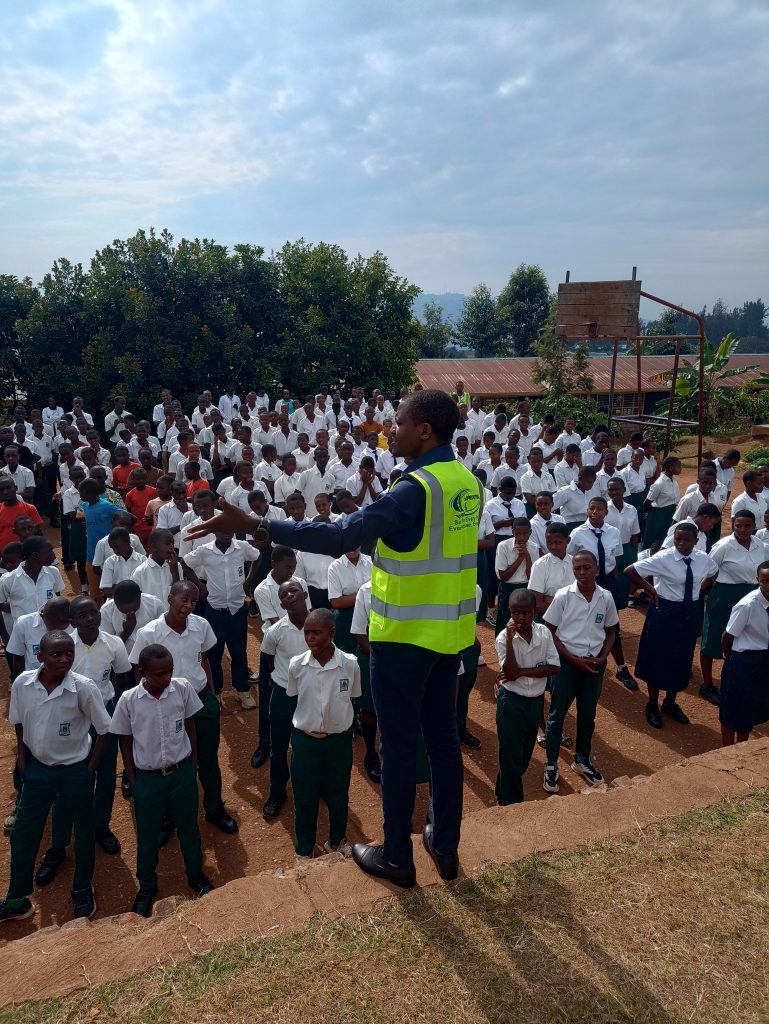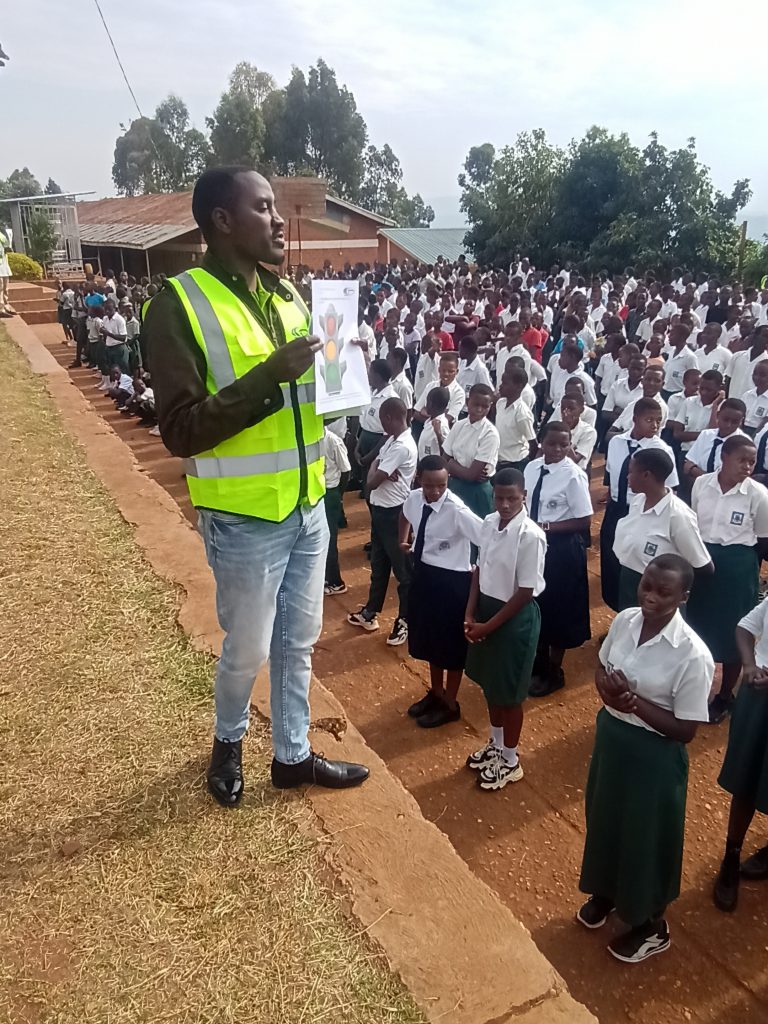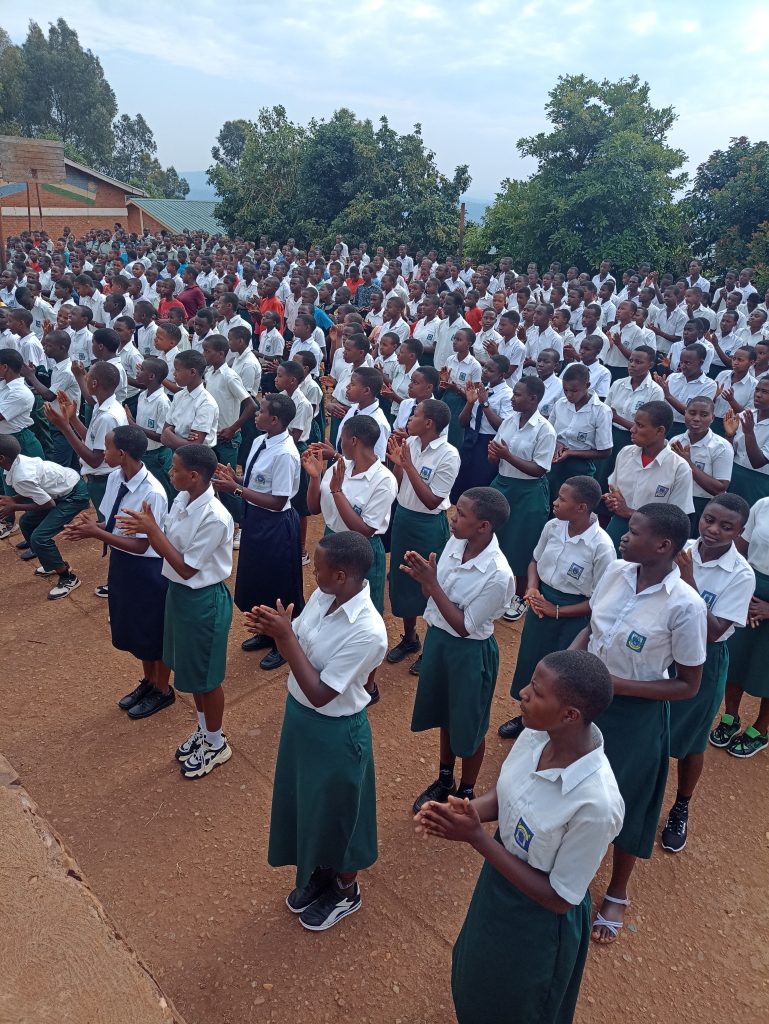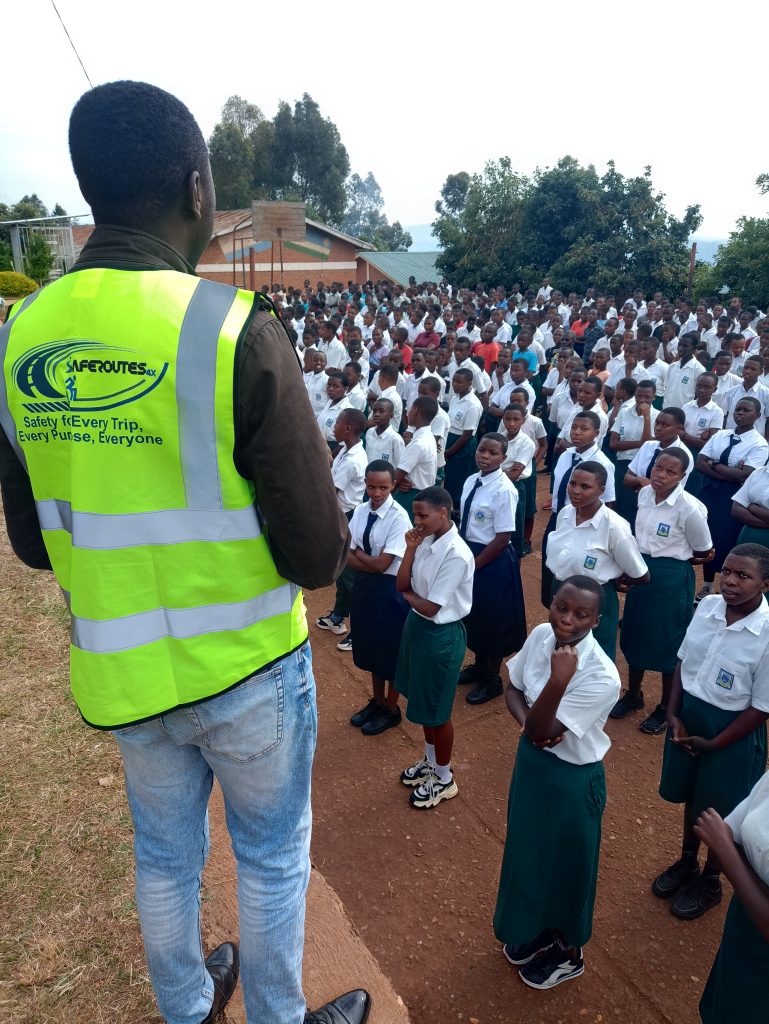On September 22, SafeRoutes4x (SR4X) conducted a Road Safety Awareness Campaign with secondary school students at G.S Shyorongi in Rulindo District. The campaign engaged both lower and upper secondary students in interactive discussions about safe road use.
What We Covered

The session opened with an interactive discussion to help students recognize that everyone is a road user. Supported by visual aids and printed materials, using games, demonstrations, and Q&A segments, facilitators introduced essential road safety lessons:
Safe Pedestrian Crossing: Students practiced the “Stop–Look–Listen” rule and the importance of using zebra crossings.
Walking Rules: Emphasis on walking on sidewalks or, where unavailable, on the left side facing traffic, and avoid playing on the road.
Passenger Safety: Correct use of seatbelts, helmets, and the importance of not distracting drivers.
Understanding Road Signs: Students participated in a quick recognition game to learn common signs such as Stop, Pedestrian Crossing, School Zone Ahead, Pedestrian priority sign.
Understanding Traffic Light: Students were introduced to the importance of traffic lights for both motorized traffic and pedestrians. Using visual images, facilitators explained what each color means and how road users should respond.

Through a short Q&A session, students demonstrated their understanding:
🔴 Red means STOP: For vehicles: they must stop completely.
For pedestrians: do not cross when the pedestrian signal is red.
🟡 Yellow means prepare:
For vehicles: Yellow means slow down and prepare to stop, it is not a signal to speed through the intersection.
For pedestrians: Yellow is not a crossing signal, wait and only cross when the green pedestrian light appears.
🟢 Green means GO safely:
For vehicles: proceed with caution, giving way to pedestrians where necessary.
For pedestrians: if the pedestrian signal is green, it is safe to cross, but always first check left and right for turning vehicles.
Outcomes and Reflections
Students actively participated in Q&A discussions and road sign quizzes, reflecting on how they could apply these lessons in their daily commutes. They demonstrated awareness of the risks they face as pedestrians and passengers and showed a strong commitment to becoming responsible road users.

The campaign concluded with a Road Safety Pledge, where students committed to practicing safe road use and encouraging others to do the same:
“I promise to cross safely, walk safely, ride safely, and remind others to do the same.”
This campaign reminded students that road safety is not only about drivers, it is a shared responsibility that begins with safe choices made by every road user.
Are you a school, institution, or organization interested in road safety education? Contact us , together we can save lives

